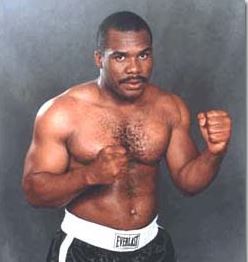 They came in the dead of night to steal whatever they could.
They came in the dead of night to steal whatever they could.
When they were done, the thugs had plundered a big-screen television and a cellphone.
Worse, their victim, Banele Sindani, lay dying, having been shot in the stomach while his horrified 12-year-old daughter looked on.
Another victim, another day in South Africa.
Sindani had once lorded over this country’s Olympic movement and, separately, athletics. Never less than controversial, his passion for sport was nonetheless immense. He was well-known around town and most recently was in charge of the Soweto Marathon.
He’ll never preside over another race or chair another meeting thanks to his faceless killers and their cruel, bloody hands.
South Africa is a murderous country and Sindani’s slaying a fortnight ago was one of thousands in 2015. No-one is immune to this slaughter and it’s a reality that gets more acute when you consider how many of our sportsmen have met gruesome ends in recent years.
The only difference is that their profile inevitably lead to headlines, political grandstanding and media conferences.
This was the case when Bafana captain Senzo Meyiwa was gunned down in Vosloorus last October. Think about that for a moment. The captain of this country’s national football team shot and killed by more faceless low-lifes.
The cops came, a big reward was offered and promises were made of finding the killers. A suspect was arrested, then released. More promises, more failures. The criminal justice system itself is half-broken; our hero’s murderer still roams the streets.
Months earlier Rob Meek, an old acquaintance, was murdered at a beach house in Port St Johns while heralding in the New Year. Rob had two claims to fame: he was a world-famous urban designer and a celebrated sailor.
Armed men wearing balaclavas shot him and ran away. Four men were arrested, last appearing in court in October. The case was postponed and the accused remain in custody.
Think about Meek’s death, too. He was a proud South African who strode on the international design stage. Killed, in a moment of madness, for what exactly?
Just over three years ago we woke to the news that former heavyweight world champion Corrie Sanders had been shot and killed during an armed robbery while celebrating a family birthday in Brits.
As the shooters unleashed a hail of bullets, Sanders shielded his daughter, getting killed in the process.
It was a savage end to one of our most naturally talented athletes and confirmed South Africa’s status as a country where life is cheap and guns are plentiful.
Fortunately his three killers were all arrested, bringing about calls for a return to the death penalty. Instead, they were sentenced to 43-year jail terms, effectively crushing their own sad, demented lives.
These aren’t isolated incidents. Three months ago two local boxers were murdered within days of one another. Lwando Molwana died on the dirty streets of the Marikana informal settlement in Philippi in the Western Cape. He was shot almost exactly 10 years to the day after former world champion Mzikisi Sikali was stabbed to death for his cellphone in Uitenhage.
The same week Molwana met his end, Boitshepo Mandawe was stabbed to death in a shebeen in Soweto. Mandawe had famously given world champion Chris van Heerden two memorable fights, but the man known as “Gangster” also had his dark side. He ran with the wrong crowd and finally paid the ultimate price when he crossed the wrong person in a place he should not have been.
No less horrific was the death of former cricket international Tertius Bosch 15 years ago.
He died young, aged 33, of suspected Guillain-Barré syndrome, but for years rumours swirled that he had been poisoned by someone close to him. Twice his body was exhumed; the second time various poisons were discovered. There was insufficient evidence to make a case, but the prevailing view remains that he was murdered.
Each of these examples is devastating and confirms how brittle daily life is. There will be more, too, the grim price of living in South Africa.
Somehow we plough on, trying to banish these horrors from memory.
It’s all we can do. It’s all we must do. – © Sunday Tribune
 To mangle an oft-quoted line by Churchill, Super Rugby is a riddle wrapped in a mystery inside an enigma.
To mangle an oft-quoted line by Churchill, Super Rugby is a riddle wrapped in a mystery inside an enigma.









